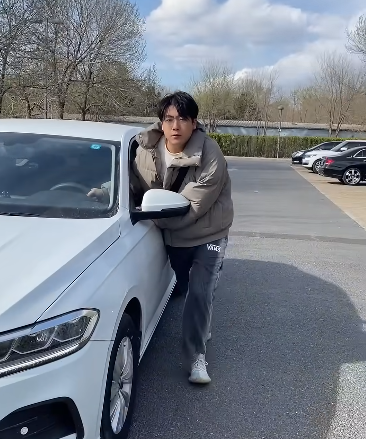
Seat belts are among the most important safety features in a car. They are designed to protect drivers and passengers during collisions by keeping them securely in place, reducing the risk of serious injuries or death. Despite their simplicity, many people either use them incorrectly or don’t use them at all. In this article, we will guide you step-by-step on how to properly use your car’s seat belts, understand their types, and highlight some common mistakes to avoid.
1. Why Seat Belts Matter
Before diving into how to use seat belts, it’s important to understand why they are essential. Seat belts:
- Prevent you from being ejected from the car during a crash.
- Distribute force across the stronger parts of your body (like the chest and pelvis).
- Keep you in the correct position to benefit from airbags.
- Help you remain in control during sudden stops or swerves.
Wearing a seat belt can reduce the risk of fatal injury to front-seat passengers by 45%, according to the National Highway Traffic Safety Administration (NHTSA).
2. Types of Seat Belts
Modern cars are typically equipped with several types of seat belts:
- Three-point seat belts: Found in most passenger vehicles today, these belts go over the lap and shoulder.
- Lap belts: Found in older vehicles or middle rear seats, they go across the hips only.
- Automatic seat belts: These were common in the 1980s and early 1990s, and they automatically move into position when the door is closed.
- Child safety seat belts: Used with car seats or booster seats to protect children.
Each type has a specific use and safety function, and it’s crucial to understand how to use them correctly.

3. Step-by-Step Guide to Using a Seat Belt
Let’s walk through the correct way to use a standard three-point seat belt, which is what most vehicles are equipped with today.
Step 1: Sit Properly in the Seat
Start by sitting upright with your back against the seat and your feet flat on the floor. Slouching or leaning can compromise the effectiveness of the seat belt and airbag system.
Step 2: Grasp the Belt
Reach for the seat belt with your hand, typically located above your left shoulder (for front passengers) or right shoulder (for rear passengers in some cars).
Step 3: Pull It Across Your Body
Pull the seat belt across your chest and torso. Make sure it lies flat and is not twisted, as a twisted belt can cut into your skin in the event of a crash.
Step 4: Click the Buckle
Insert the metal latch into the seat belt buckle until you hear a “click.” Give it a little tug to ensure it’s securely latched.
Step 5: Adjust the Strap
- The lap belt should lie snugly across your hips, not your stomach.
- The shoulder strap should cross the middle of your chest and rest on your shoulder—not your neck or face.
- If necessary, adjust the height of the belt on the side pillar of the car for a comfortable and safe fit.
4. Rear Seat Belt Use
Many people mistakenly believe that seat belts aren’t necessary in the back seat. This is a myth. In fact, unbelted rear passengers can become deadly projectiles during a crash, potentially injuring front-seat occupants. The same rules apply: wear the belt flat and snugly across your body, buckle it correctly, and make sure it’s not twisted.

5. Special Considerations for Children and Pregnant Women
Children:
- Always use child safety seats for infants and toddlers, and booster seats for older children who don’t yet fit adult belts.
- Ensure the seat is properly installed, ideally in the back seat, which is the safest place for children.
- Never place the shoulder belt under a child’s arm or behind their back—it can cause serious injuries.
Pregnant Women:
- Wear the lap belt below the belly, low on the hips.
- The shoulder belt should go between the breasts and to the side of the belly.
- Never put the belt directly across the stomach.
Consult your doctor and car seat manufacturer for more guidance.
6. Common Mistakes to Avoid
Many people use seat belts incorrectly without even realizing it. Here are some mistakes to avoid:
- Putting the belt behind your back or under your arm: This can cause serious injuries to your ribs, spine, or internal organs.
- Loose belts: A belt should fit snugly. Loose belts won’t restrain you properly in a crash.
- Not adjusting height: If the belt cuts into your neck, adjust the anchor point on the car’s side pillar.
- Twisted belts: Always untwist the belt before buckling. Twists can reduce effectiveness and cause cuts or bruises.
- Ignoring warning lights: If your seat belt indicator is lit up, it means someone in the car is unbuckled—always double-check.

7. Seat Belt Maintenance Tips
A poorly functioning seat belt can be just as dangerous as not wearing one. Here’s how to keep them in good shape:
- Inspect regularly: Check for fraying, cuts, or worn-out areas.
- Test retraction: Pull the belt out and let it go. It should retract smoothly.
- Clean carefully: Use mild soap and water—harsh chemicals can damage the fabric.
- Avoid slamming doors on belts: This can damage the mechanism inside the pillar.
- Replace after an accident: Seat belts can stretch or get damaged during a crash, even if it’s not visible
8. Legal Requirements
In most countries, wearing seat belts is a legal requirement for both drivers and passengers. Fines and penalties can be issued if you’re caught unbelted, and in many places, the driver is responsible for ensuring all passengers are buckled up—especially children.
In some places, seat belt laws are “primary,” meaning you can be pulled over just for not wearing a seat belt. In others, it’s a “secondary” law, meaning another violation is needed before you can be cited for not buckling up. Either way, it’s a smart habit for your safety.

9. In Case of Emergency
If you are ever in an accident and need to exit quickly, remember:
- Seat belts have a red release button on the buckle. Press it firmly to unbuckle.
- Some modern cars are equipped with seat belt pre-tensioners or auto-locking retractors. These can feel tight, but they help protect you in a crash.
Conclusion
Seat belts are a simple yet powerful tool to save lives. Whether you’re driving across town or taking a long road trip, always wear your seat belt properly and encourage others to do the same. Taking a few seconds to buckle up can make all the difference in an emergency.
So the next time you step into your car, remember: click it every time, every ride. Your life—and the lives of those around you—depend on it.



